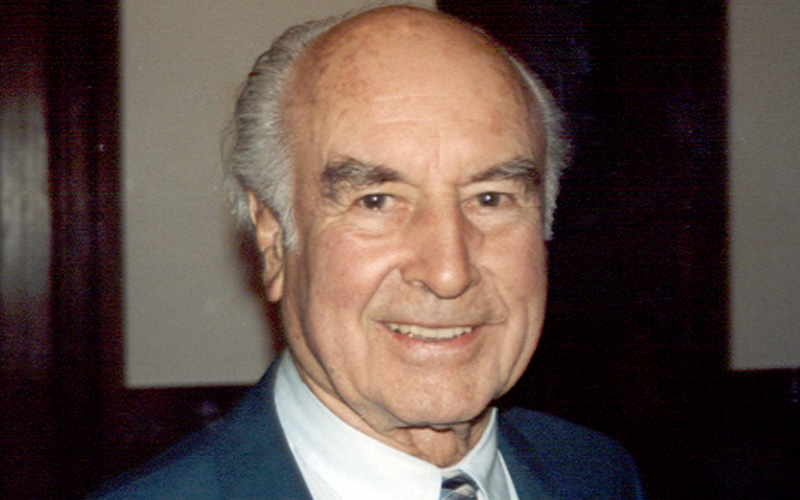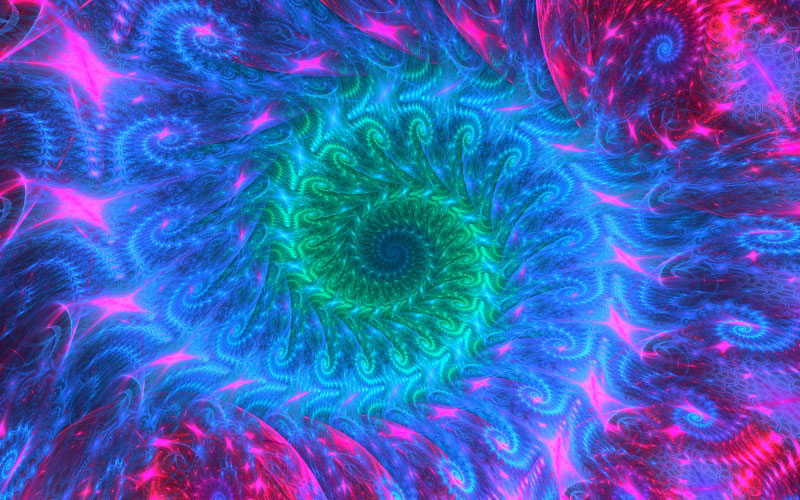Lysergic acid diethylamide (LSD) is a psychedelic substance that was first synthesized by the Swiss chemist Albert Hofmann in 1938.
Initially created as the 25th derivative in a series of lysergic-acid compounds, further research into LSD-25 was set aside when preliminary testing showed minimal commercial potential.
However, five years later, Hofmann revisited the compound and accidentally ingested a small amount during its crystallization process. This likely was the first LSD trip in human history, which led to Hofmann discovering the compound’s psychedelic effects.
How LSD Works
LSD interacts with serotonin receptors that play a key role in mood, perception and sleep. It primarily acts as a partial agonist at serotonin receptors, particularly the 5-HT2A receptor subtype.
It’s believed that psychedelics such as LSD and psilocybin stimulate neuroplasticity via the 5-HT2A receptor. Neuroplasticity is the process by which the connections in the brain reshape, creating new neural connections. Past research has explored neuroplasticity as a crucial element in the way antidepressants work.
LSD appears to disrupt the organization within networks, including the default mode network (DMN), which normally oversees functions such as self-reflection, autobiographical memory and perception of time.
Researchers speculate that the disintegration of the DMN, combined with reduced electrical activity in consciousness-related alpha brain waves, may contribute to a temporary loss of the sense of self experienced by some psychedelic-drug users.
History
LSD comes from the ergot fungus, which contains a number of highly poisonous and psychoactive alkaloids. There was a time in human history, dating back to the early Middle Ages, when ergot was dreaded as the source or ergotism, a condition that causes convulsions, muscle spasms, hallucinations and gangrenous pain when someone ingests ergot-infested bread or barley beer. However, due to advancements in agricultural methods, ergotism is rare today.

In his book, “LSD: My Problem Child,” Hofmann points out that the perception of ergot has evolved over the course of history from a dreaded poison to “a rich storehouse of valuable remedies.” Midwives used ergot to induce labor, and some medical practitioners used it stop postpartum bleeding. When Hofmann was working for the Swiss pharmaceutical company Sandoz, he and his colleagues were attempting to synthesize a marketable drug from ergot’s alkaloids.
In the modern history of psychedelics, Hofmann’s accidental discovery of LSD in 1938 is considered a seminal event. However, Hofmann pushes back on the popular narrative, asserting that it’s only “partly true.”
“LSD came into being within a systematic research program, and the ‘accident’ did not occur until much later,” Hofmann explains in the book. “When LSD was already five years old, I happened to experience its unforeseeable effects in my own body – or rather, in my own mind.”
Prior to Hofmann’s research, in the early 1930s, chemists in U.K. and U.S. laboratories had isolated the nucleus common to all ergot alkaloids: lysergic acid. In 1938, while working at the Sandoz research lab in Basel, Switzerland, Hofmann synthesized the 25th substance in the series of lysergic-acid derivatives and named it lysergic acid diethylamide, or LSD-25. However, upon testing, LSD-25 “aroused no special interest” among Sandoz researchers to warrant further study, Hoffman explains, and LSD-25 was shelved.
Driven by his suspicion that LSD-25 possessed “properties other than those established in the first investigations,” Hofmann produced another sample for testing five years later. On April 16, 1943, he left the lab abruptly due to restlessness and slight dizziness, realizing later he had accidentally absorbed LSD-25.

“At home I lay down and sank into a not unpleasant intoxicated-like condition, characterized by an extremely stimulated imagination,” Hofmann recalls. “In a dreamlike state, with eyes closed … I perceived an uninterrupted stream of fantastic pictures, extraordinary shapes with intense, kaleidoscopic play of colors.”
Convinced of its unique qualities, Hofmann intentionally dosed himself a few days later, on April 19, ingesting 250 micrograms of the substance. Hoffman, escorted by a lab assistant, rode his bicycle home and experienced an intense trip that he described in vivid detail.
In 1947, Sandoz marketed the compound as Delysid, introducing LSD as an experimental psychiatric drug.
In the ensuing decades, scientists studied LSD’s potential efficacy as a treatment for alcohol addiction and trauma. In the 1950s, Bill Wilson, co-founder of Alcoholics Anonymous, sought to introduce LSD into the program, after experiencing several LSD sessions himself.
Trouble Ahead
Between 1953 and 1964, the U.S. Central Intelligence Agency conducted a covert – and illegal – operation known as MKUltra, in which the CIA administered high doses of LSD and other drugs to civilians, soldiers and prisoners, with the overarching goal of developing interrogation and mind-control techniques. In many cases, the CIA conducted these experiments without the subjects’ knowledge or consent.
In the late 1960s, LSD played a central role in the hippie counterculture that emerged in the San Francisco Bay Area. Ken Kesey and the Merry Pranksters – a group of LSD advocates who were friends with members of the Grateful Dead – organized the infamous “acid tests,” which were multimedia events that intertwined live music, fluorescent décor, psychedelic artwork and LSD-spiked Kool-Aid. LSD even inspired a musical genre known as “acid rock,” which includes the likes of the Dead, the Doors and Jefferson Airplane.
Fueled by bubbling anti-war and anti-establishment sentiment, the counterculture movement spread across the nation, putting LSD, marijuana and other drugs in the crosshairs of federal regulators. At the urging of President Richard Nixon, the U.S. Congress passed the Federal Comprehensive Drug Abuse Prevention and Control Act of 1970, which, among other things, established a list of controlled medications and illicit substances categorized from Schedule I to V.
Since 1970, LSD has been deemed a Schedule I substance under the Controlled Substances Act, although it has remained a popular recreational drug.
LSD’s Therapeutic Renaissance
A review of multiple studies from the 1990s and 2000s, published in Neuropsychopharmacology, concluded that “LSD acutely induced bliss, audiovisual synesthesia, altered meaning of perceptions, derealization, depersonalization and mystical experiences.”
Despite being in a “delirious, bewildered” state during his first planned self-experiment with LSD, Hofmann recalls having “brief periods of clear and effective thinking.” The morning after the experience, Hofmann says he woke up “refreshed, with a clear head, though still somewhat tired physically.”
“A sensation of well-being and renewed life flowed through me,” Hofmann explains in his book. “Breakfast tasted delicious and gave me extraordinary pleasure. When I later walked out into the garden, in which the sun shone now after a spring rain, everything glistened and sparkled in a fresh light. The world was as if newly created. All my senses vibrated in a condition of highest sensitivity, which persisted for the entire day.”
Studies suggest that LSD, administered in a medically supervised setting, can help reduce anxiety for people with life-threatening diseases, and can be effective in treating alcoholism, obsessive-compulsive disorder and cluster headaches.
Several ongoing studies are exploring the potential therapeutic benefits of LSD for a range of mental-health disorders. This includes the effects of microdosing – smaller doses that do not alter consciousness (sub-perceptual) – in addition to larger, mind-altering amounts.
Risks
The aforementioned review in Neuropsychopharmacology found that LSD “moderately increased blood pressure, heart rate, body temperature and pupil size.”
LSD also has been linked to serotonin syndrome, a condition with symptoms ranging from mild to severe. LSD is one of a long list of prescription medications, illicit drugs and supplements associated with serotonin syndrome.
There has been speculation that LSD could trigger psychosis in individuals who are predisposed to schizophrenia. However, at least one study asserts that LSD and other psychedelics “offer an exciting scientific tool … to explore new neuropsychiatric approaches for treating a wide range of psychiatric maladies including schizophrenia.”
As with other psychedelic substances, using LSD carries the risk of a “bad trip,” during which the individual could harm themselves or others. This magnifies the importance of set and setting, and the role of a qualified healthcare practitioner in any psychedelic therapy.
Resources
- National Library of Medicine
- Technology Networks
- Scientific American
- “LSD: My Problem Child” – Albert Hofmann
- “How to Change Your Mind: What the New Science of Psychedelics Teaches Us About Consciousness, Dying, Addiction, Depression and Transcendence” – Michael Pollan
- “Modern Clinical Research on LSD” – Matthias Liechti

